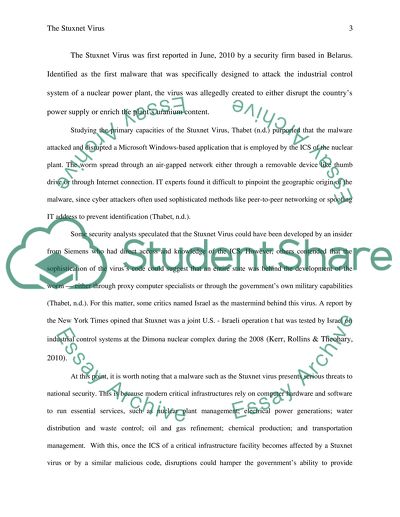Cite this document
(“IT - The Stuxnet Virus Research Paper Example | Topics and Well Written Essays - 1000 words”, n.d.)
IT - The Stuxnet Virus Research Paper Example | Topics and Well Written Essays - 1000 words. Retrieved from https://studentshare.org/information-technology/1449508-stuxnet-virus
IT - The Stuxnet Virus Research Paper Example | Topics and Well Written Essays - 1000 words. Retrieved from https://studentshare.org/information-technology/1449508-stuxnet-virus
(IT - The Stuxnet Virus Research Paper Example | Topics and Well Written Essays - 1000 Words)
IT - The Stuxnet Virus Research Paper Example | Topics and Well Written Essays - 1000 Words. https://studentshare.org/information-technology/1449508-stuxnet-virus.
IT - The Stuxnet Virus Research Paper Example | Topics and Well Written Essays - 1000 Words. https://studentshare.org/information-technology/1449508-stuxnet-virus.
“IT - The Stuxnet Virus Research Paper Example | Topics and Well Written Essays - 1000 Words”, n.d. https://studentshare.org/information-technology/1449508-stuxnet-virus.


